Category
Popular Articles
- AI (12)
- Android (38)
- App Suggest (4)
- Apple (15)
- Apple TV (2)
- Bluetooth (3)
- Cars (2)
- ChatGpt (1)
- Chrome (2)
- Did you know? (1)
- E-Commerce News (1)
- Ecommerce Websites business (7)
- Electronics Shopping (5)
- Fashion Tips (3)
- Gaming (4)
- Google Gemini (3)
- Hair Care Tips (2)
- How to (13)
- iCloud (1)
- Infotainment System (1)
- Iphone (101)
- Job Posting (1)
- Lifestyle (3)
- Mac (20)
- Mobile Games (1)
- Netflix (1)
- Online Shopping Websites (2)
- Personal Finance Management (3)
- Product Reviews (3)
- Roku TV (4)
- Samsung (9)
- Shopping Tips (10)
- Spotify (1)
- Tech (92)
- Windows 11 (18)
- Zero Waste (3)
Discounted Products
-
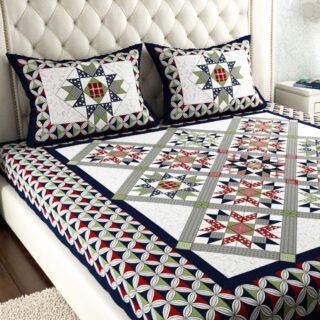 Leo Creation 144 TC Cotton Double Jaipuri Prints Flat Bedsheet(Pack of 1, Blue, Gree, Red, Grey, Light Grey)
Leo Creation 144 TC Cotton Double Jaipuri Prints Flat Bedsheet(Pack of 1, Blue, Gree, Red, Grey, Light Grey)
₹2,999.00Original price was: ₹2,999.00.₹329.00Current price is: ₹329.00. -
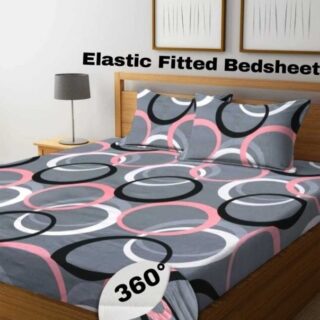 Home Garage 210 TC Cotton King Floral Fitted (Elastic) Bedsheet(Pack of 1, Grey)
Home Garage 210 TC Cotton King Floral Fitted (Elastic) Bedsheet(Pack of 1, Grey)
₹999.00Original price was: ₹999.00.₹299.00Current price is: ₹299.00. -
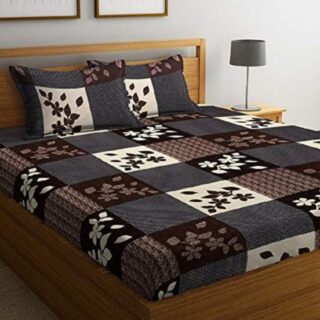 Goodrik 140 TC Cotton Double 3D Printed Flat Bedsheet(Pack of 1, Brown)
Goodrik 140 TC Cotton Double 3D Printed Flat Bedsheet(Pack of 1, Brown)
₹499.00Original price was: ₹499.00.₹229.00Current price is: ₹229.00. -
 GLOBALSHOP 350 TC Microfiber Double Floral Flat Bedsheet(Pack of 1, Multicolor)
GLOBALSHOP 350 TC Microfiber Double Floral Flat Bedsheet(Pack of 1, Multicolor)
₹1,250.00Original price was: ₹1,250.00.₹263.00Current price is: ₹263.00. -
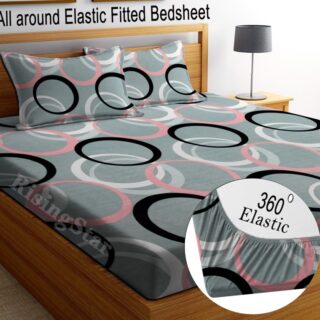 RisingStar 250 TC Microfiber King Printed Fitted (Elastic) Bedsheet(Pack of 1, FITTED-ROUND-CIRCLES-PREMIUM)
RisingStar 250 TC Microfiber King Printed Fitted (Elastic) Bedsheet(Pack of 1, FITTED-ROUND-CIRCLES-PREMIUM)
₹2,299.00Original price was: ₹2,299.00.₹299.00Current price is: ₹299.00. -
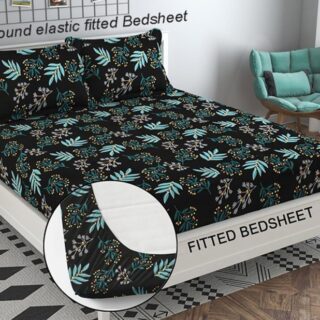 Home Garage 210 TC Cotton King Floral Fitted (Elastic) Bedsheet(Pack of 1, Fitted Black Green)
Home Garage 210 TC Cotton King Floral Fitted (Elastic) Bedsheet(Pack of 1, Fitted Black Green)
₹1,299.00Original price was: ₹1,299.00.₹299.00Current price is: ₹299.00. -
 Home Garage 180 TC Cotton King 3D Printed Flat Bedsheet(Pack of 1, White)
Home Garage 180 TC Cotton King 3D Printed Flat Bedsheet(Pack of 1, White)
₹999.00Original price was: ₹999.00.₹229.00Current price is: ₹229.00. -
 Home Sizzler 153 cm (5 ft) Polyester Room Darkening Window Curtain (Pack Of 2)(Floral, Maroon)
Home Sizzler 153 cm (5 ft) Polyester Room Darkening Window Curtain (Pack Of 2)(Floral, Maroon)
₹799.00Original price was: ₹799.00.₹299.00Current price is: ₹299.00. -
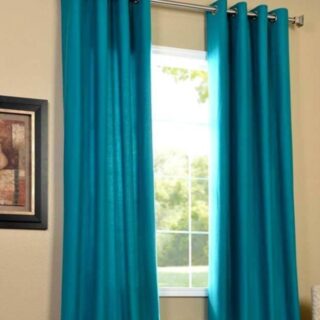 Panipat Textile Hub 152.4 cm (5 ft) Polyester Window Curtain (Pack Of 2)(Solid, Aqua)
Panipat Textile Hub 152.4 cm (5 ft) Polyester Window Curtain (Pack Of 2)(Solid, Aqua)
₹1,899.00Original price was: ₹1,899.00.₹299.00Current price is: ₹299.00. -
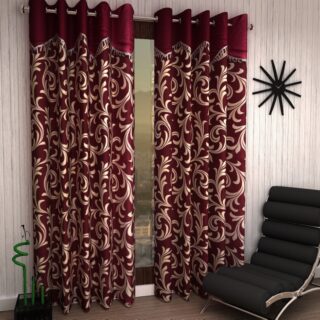 Home Sizzler 214 cm (7 ft) Polyester Semi Transparent Door Curtain (Pack Of 2)(Floral, Maroon)
Home Sizzler 214 cm (7 ft) Polyester Semi Transparent Door Curtain (Pack Of 2)(Floral, Maroon)
₹1,199.00Original price was: ₹1,199.00.₹399.00Current price is: ₹399.00. -
 Home Sizzler 153 cm (5 ft) Polyester Room Darkening Window Curtain (Pack Of 2)(Floral, Brown)
Home Sizzler 153 cm (5 ft) Polyester Room Darkening Window Curtain (Pack Of 2)(Floral, Brown)
₹799.00Original price was: ₹799.00.₹299.00Current price is: ₹299.00. -
 Stella Creations 214 cm (7 ft) Polyester Room Darkening Door Curtain (Pack Of 2)(Abstract, Brown)
Stella Creations 214 cm (7 ft) Polyester Room Darkening Door Curtain (Pack Of 2)(Abstract, Brown)
₹1,299.00Original price was: ₹1,299.00.₹449.00Current price is: ₹449.00. -
 Homefab India 152.5 cm (5 ft) Polyester Room Darkening Window Curtain (Pack Of 2)(Floral, Light Blue)
Homefab India 152.5 cm (5 ft) Polyester Room Darkening Window Curtain (Pack Of 2)(Floral, Light Blue)
₹1,199.00Original price was: ₹1,199.00.₹319.00Current price is: ₹319.00. -
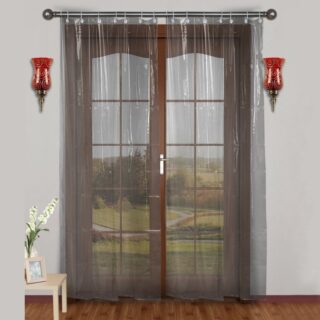 Urban Home 214 cm (7 ft) PVC Transparent Door Curtain Single Curtain(Solid, Off White)
Urban Home 214 cm (7 ft) PVC Transparent Door Curtain Single Curtain(Solid, Off White)
₹699.00Original price was: ₹699.00.₹203.00Current price is: ₹203.00. -
 Panipat Textile Hub 213 cm (7 ft) Polyester Door Curtain (Pack Of 2)(Solid, Brown)
Panipat Textile Hub 213 cm (7 ft) Polyester Door Curtain (Pack Of 2)(Solid, Brown)
₹1,199.00Original price was: ₹1,199.00.₹349.00Current price is: ₹349.00.
Affiliate Links
Promotion
Hi, I’m Jessica! As a marketing manager who also manages a busy household, my MacBook is my daily companion for work and personal projects. I love its sleek design, smooth interface, and reliability. But like many Mac users, I occasionally run into one challenge — some of the apps I need are only available on Windows.
For example, at my tech startup, some of our reporting tools are built for Windows. And when I help my kids with school projects, certain educational programs only run on Windows machines. Instead of buying a separate Windows laptop, I’ve found ways to make these applications run directly on my MacBook.
If you’ve ever faced the same issue, don’t worry. In this guide, I’ll share different methods to run Windows applications on a MacBook and which ones might work best for you, based on my own experience.
Why Run Windows Applications on a MacBook?
There are several reasons why Mac users often need Windows compatibility:
- Work software – Some companies still rely on Windows-only apps.
- School programs – Educational apps and coding tools sometimes don’t have Mac versions.
- Games – A lot of PC games are Windows-exclusive.
- Specialized tools – Engineering, design, and finance software may only work in Windows.
Method 1: Boot Camp (Intel Macs Only)
If you’re using an Intel-based MacBook (not the newer Apple Silicon M1/M2 models), Apple’s Boot Camp Assistant lets you install Windows alongside macOS.
Here’s how it works:
- Open Boot Camp Assistant from Applications > Utilities.
- Follow the prompts to partition your hard drive.
- Install a licensed copy of Windows.
- Restart your Mac to choose between macOS or Windows.
Pros:
- Full Windows experience (your Mac essentially becomes a Windows PC).
- Maximum performance for apps and games.
Cons:
- Not available on newer Apple Silicon Macs.
- You need to restart every time you want to switch between macOS and Windows.
When I borrowed my husband’s older Intel MacBook, Boot Camp worked beautifully for running a Windows-only finance tool we needed.
Method 2: Virtual Machines (Best for Everyday Use)
On my M2 MacBook, Boot Camp isn’t an option, so I turned to virtual machines (VMs). A VM lets you run Windows inside macOS like an app.
Popular VM options include:
- Parallels Desktop (very user-friendly)
- VMware Fusion
- UTM (free but less polished)
Here’s how I set it up with Parallels:
- Download and install Parallels Desktop.
- Follow the wizard to download and install Windows 11 (it even detects your Apple chip).
- Once installed, you can run Windows and macOS apps side by side.
Pros:
- No restart needed.
- Seamless integration — I could drag and drop files between Windows and Mac apps.
- Great for productivity apps and light gaming.
Cons:
- Requires more RAM and storage.
- Demanding Windows apps (like heavy games) may run slower compared to Boot Camp.
Personally, this method has been the most practical for me. I use Parallels to run a Windows-only design review tool while still working on my Mac apps at the same time.
Method 3: Wine (Free Compatibility Layer)
If you only need to run lightweight Windows apps, Wine (short for Wine Is Not an Emulator) might work. Instead of installing Windows, Wine translates Windows app calls into macOS ones.
Steps:
- Download Wine from a project like WineHQ or use CrossOver (a paid, polished version of Wine).
- Install Wine.
- Run your Windows app by double-clicking it, and Wine will launch it.
Pros:
- No need for a Windows license.
- Lightweight and free.
Cons:
- Not all apps work correctly.
- Setup can be technical, and stability isn’t guaranteed.
I tried Wine with a small educational app for my kids. It ran okay, but for larger business tools, I stuck with Parallels.
Method 4: Remote Desktop
Another clever solution is to run Windows on a different PC (like a work computer) and connect to it remotely from your MacBook.
Steps:
- Install Microsoft’s Remote Desktop app from the Mac App Store.
- Make sure you have a Windows PC running and connected to the internet.
- Connect remotely and use Windows apps as if you were sitting at that computer.
Pros:
- No need to install Windows on your Mac.
- Great if your company provides a Windows PC but you want to work from your MacBook.
Cons:
- Requires another Windows computer.
- Dependent on internet speed and stability.
This option helped me during my hybrid work schedule when I needed to access my office PC from home.
Method 5: Cloud PCs (Windows in the Cloud)
If you don’t own a Windows machine, you can rent one in the cloud. Microsoft offers Windows 365 Cloud PC, and there are other services like Shadow or Amazon WorkSpaces.
Steps:
- Subscribe to a cloud PC service.
- Log in via your Mac’s browser or remote desktop app.
- Use Windows apps hosted in the cloud.
Pros:
- Access Windows anywhere.
- No heavy setup required.
Cons:
- Subscription costs can add up.
- Requires stable, high-speed internet.
Tips for a Smooth Experience
Based on my trial and error, here are a few things to keep in mind:
- Check compatibility before committing — not all apps work perfectly under Wine or VMs.
- Allocate enough RAM if using virtual machines (I recommend at least 8 GB for smooth multitasking).
- Use an external drive or cloud storage to manage space, since Windows installations can eat up 20–40 GB.
- Keep backups — juggling two operating systems means more chances of hiccups, so I always back up important files.
My Recommendation
If you’re like me — balancing work, family, and the need for occasional Windows apps — I’d recommend:
- Parallels Desktop (or another VM) for daily productivity apps.
- Boot Camp if you have an Intel Mac and need maximum performance.
- Wine or CrossOver for quick, lightweight apps.
- Remote Desktop or Cloud PCs for occasional business use.
With these options, I’ve been able to run everything from work software to kids’ learning tools without buying a separate PC.
Final Thoughts
Owning a MacBook doesn’t mean you have to give up Windows applications. Whether you choose Boot Camp, Parallels, Wine, or cloud services, there’s a method that can fit your lifestyle and needs.
For me, being able to run Windows apps on my MacBook has been a lifesaver — it saves time, money, and space while letting me stay productive. If you’re in the same boat, I hope this guide helps you pick the best option.
Written by Bazaronweb
Latest Tech Articles
- 5 Ways to Backup and Restore Registry Settings in Windows
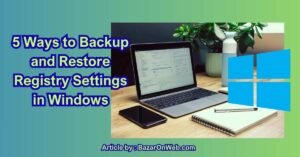
- iMessage Not Syncing Between iPhone & Mac? 8 Proven Ways to Fix Account & Device Issues
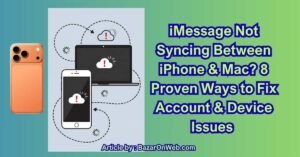
- Outlook Not Receiving Emails? 8 Proven Fixes for Windows, Mac & Mobile
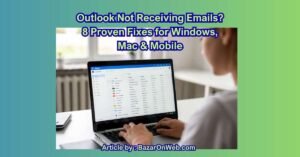
- Zoom Not Connecting? 7 Ways to Fix Meeting Join Errors on Windows & Mac

- Microsoft Teams Not Opening? 5 Proven Fixes to Restart Your Workspace

Products
-
![Apple Watch Ultra 3 [GPS + Cellular 49mm] Running & Multisport Smartwatch w/Rugged Titanium Case w/Black Titanium Milanese Loop - M. Satellite Communications, Advanced Health & Fitness Tracking](https://bazaronweb.com/retailstores/wp-content/uploads/2025/09/apple-watch-320x320.jpg) Apple Watch Ultra 3 [GPS + Cellular 49mm] Running & Multisport Smartwatch w/Rugged Titanium Case w/Black Titanium Milanese Loop - M. Satellite Communications, Advanced Health & Fitness Tracking
Apple Watch Ultra 3 [GPS + Cellular 49mm] Running & Multisport Smartwatch w/Rugged Titanium Case w/Black Titanium Milanese Loop - M. Satellite Communications, Advanced Health & Fitness Tracking
-
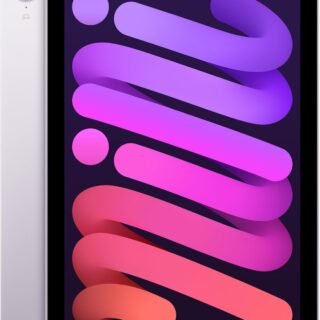 Apple iPad mini (A17 Pro): Apple Intelligence, 8.3-inch Liquid Retina Display, 256GB, Wi-Fi 6E, 12MP Front/12MP Back Camera, Touch ID, All-Day Battery Life — Purple
Apple iPad mini (A17 Pro): Apple Intelligence, 8.3-inch Liquid Retina Display, 256GB, Wi-Fi 6E, 12MP Front/12MP Back Camera, Touch ID, All-Day Battery Life — Purple
-
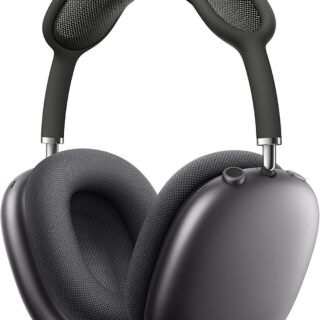 Apple AirPods Max Wireless Over-Ear Headphones, Active Noise Cancelling, Transparency Mode, Personalized Spatial Audio, Dolby Atmos, Bluetooth Headphones for iPhone – Space Gray
Apple AirPods Max Wireless Over-Ear Headphones, Active Noise Cancelling, Transparency Mode, Personalized Spatial Audio, Dolby Atmos, Bluetooth Headphones for iPhone – Space Gray
-
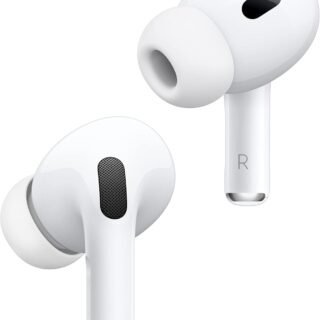 Apple AirPods Pro 2 Wireless Earbuds, Active Noise Cancellation, Hearing Aid Feature, Bluetooth Headphones, Transparency, Personalized Spatial Audio, High-Fidelity Sound, H2 Chip, USB-C Charging
Apple AirPods Pro 2 Wireless Earbuds, Active Noise Cancellation, Hearing Aid Feature, Bluetooth Headphones, Transparency, Personalized Spatial Audio, High-Fidelity Sound, H2 Chip, USB-C Charging
-
 Leo Creation 144 TC Cotton Double Jaipuri Prints Flat Bedsheet(Pack of 1, Blue, Gree, Red, Grey, Light Grey)
Leo Creation 144 TC Cotton Double Jaipuri Prints Flat Bedsheet(Pack of 1, Blue, Gree, Red, Grey, Light Grey)
₹2,999.00Original price was: ₹2,999.00.₹329.00Current price is: ₹329.00.
Leave a Reply